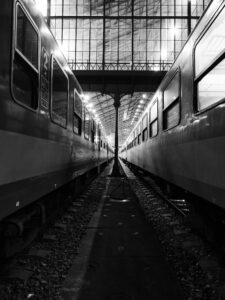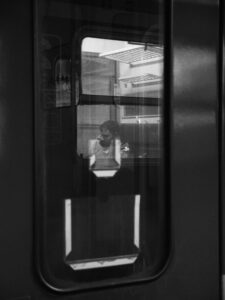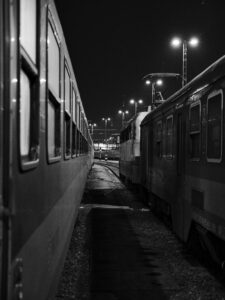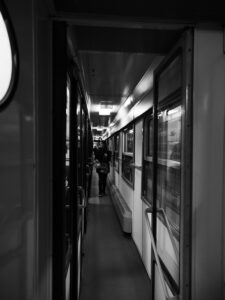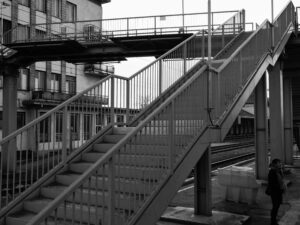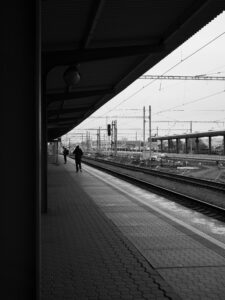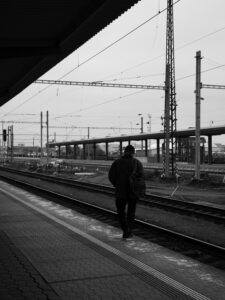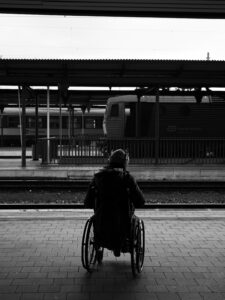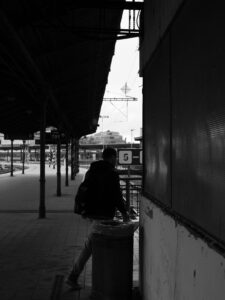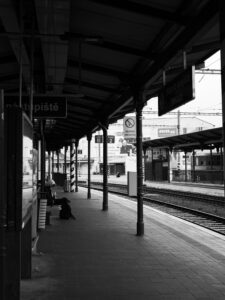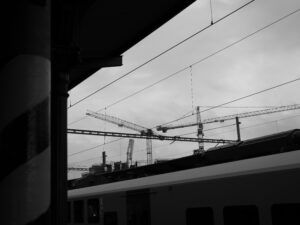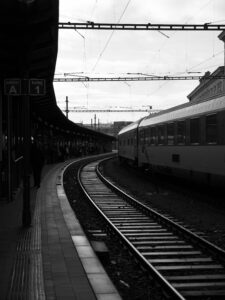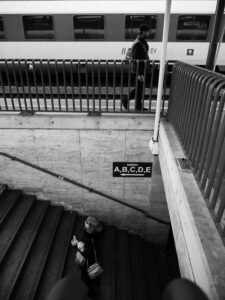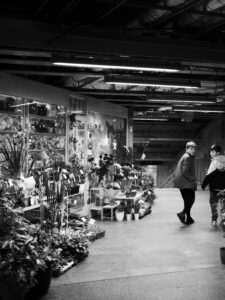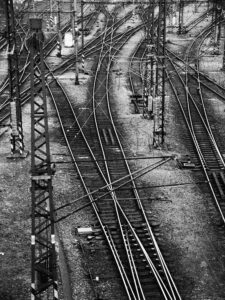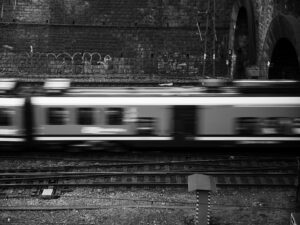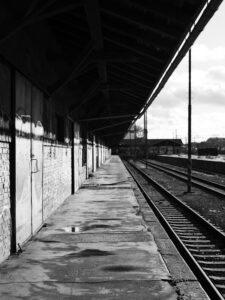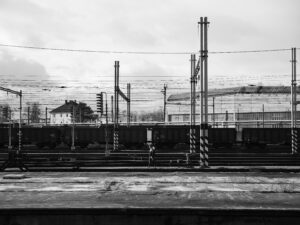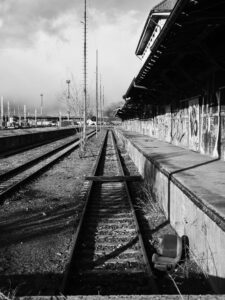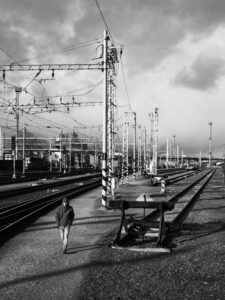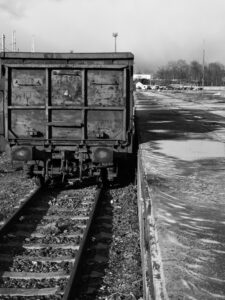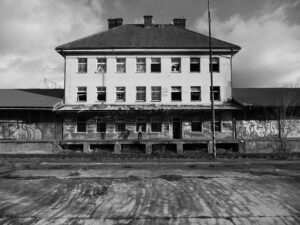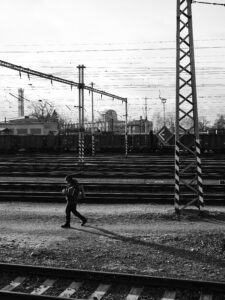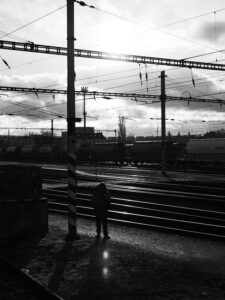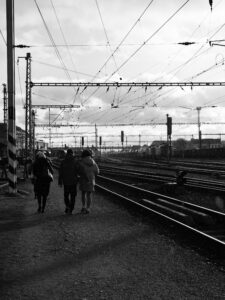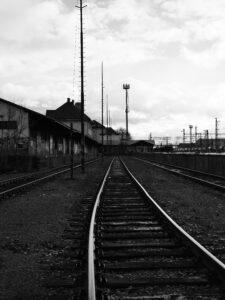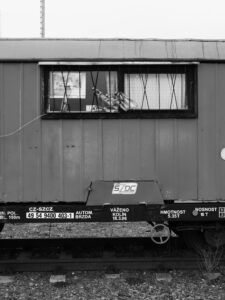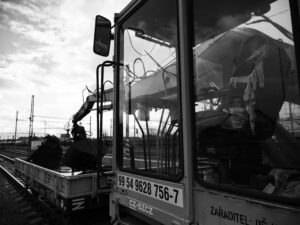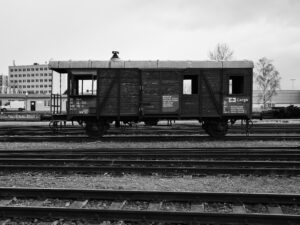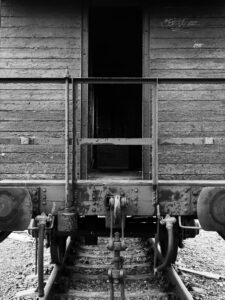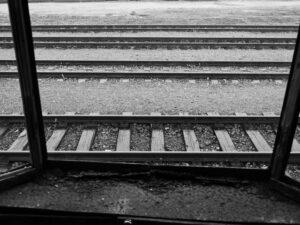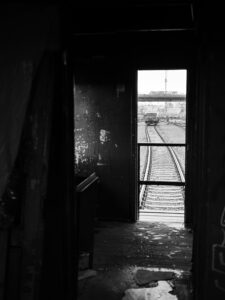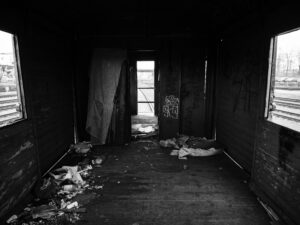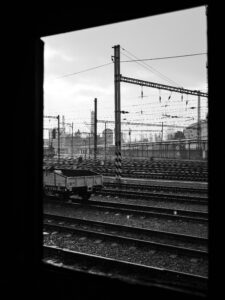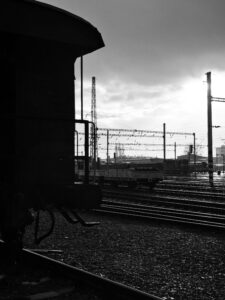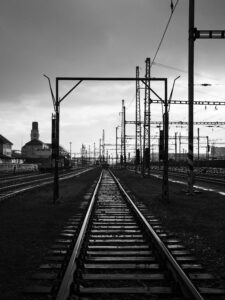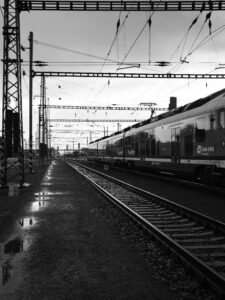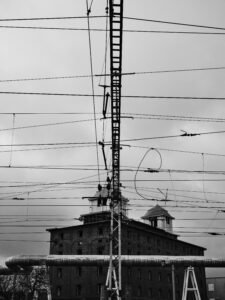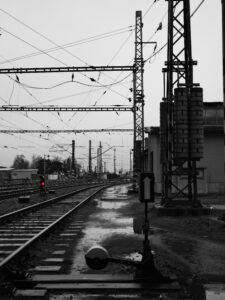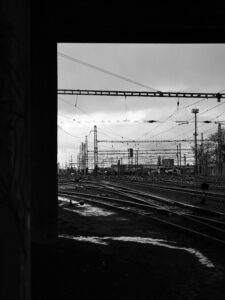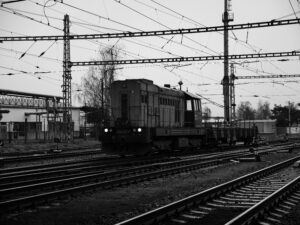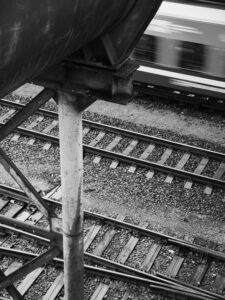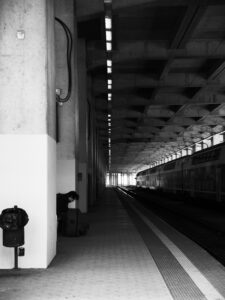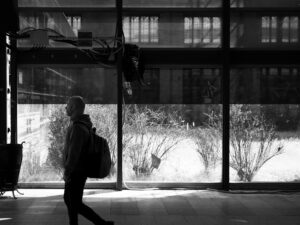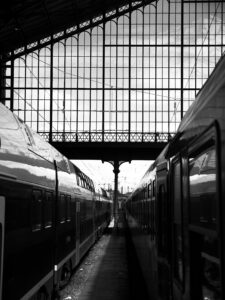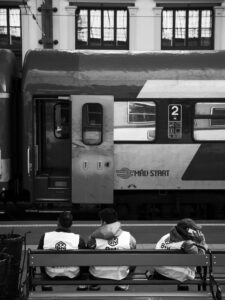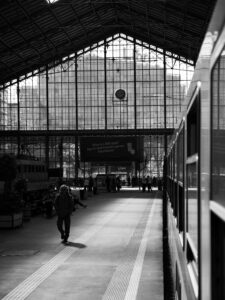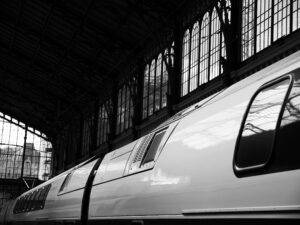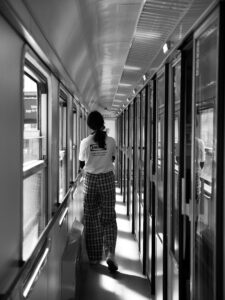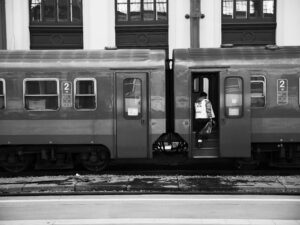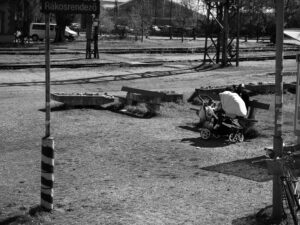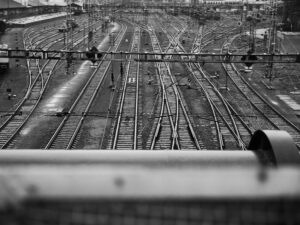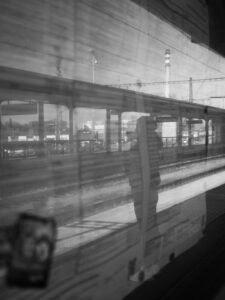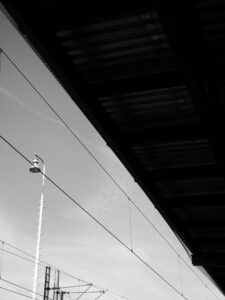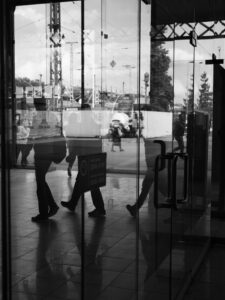Long-term series
While reading this annotation and viewing this album, you can also listen to my recordings of sounds from train stations and railways, adding audio to the images and creating an audio-visual, almost moving experience.
In my relatively short life I have travelled a lot by train. Whether it was a daily commute to high school, to university in Prague or quite frequent trips to Hungary. Therefore, I have a close relationship to and considerable experience with rail transport. I have indirectly summed up the main things that fascinate me about railways in a short reflection on the film Hugo (2011):
„
The film is set in Paris in 1931, but the key themes are events taking place at the turn of the century - a time when Georges Meliés was making films and when film was primarily a technological novelty and attraction in the world. However, film, or rather the cinematograph, was only one of the attributes of the time. Not just an attribute of the time, but an outcome of it. "It" being the Industrial Revolution, which escalated in Western Europe during the 19th century until it culminated in Paris and other European capitals in the Belle Époque - a time filled with technical conveniences and an obsession with progress. At the turn of the century and before World War I, a new era was ushered in and the world began to move in new modernist directions, building on the backdrop of the Industrial and Technical Revolution. Hugo uses the stylised setting of Paris as a whole, and specifically the Gare Montparnasse railway station, to thematise this backdrop of the period in which it is set. The backdrop of the historical whole is thus brought into a naturally cinematic backdrop, and literally so - the backdrop of Parise of the time depicted through set design. The setting of the station and the railway is ideal for this, as it itself represents a product of the industrial revolution in the speed of movement that steam trains as technological conveniences offered. In addition, the station is also symbolically a place where people and, by extension, thoughts and influences from many directions collide as the trains converge and diverge.
The railway station is a concrete carrier of symbols that are woven into the film's narrative in the course of the film. But Paris as a whole figures in similar meanings. Even the opening montage (montage!) shot, where the mechanical gears turn into the Arc de Triomphe. This is not only a spectacular start to the film, it is again a symbol of Paris as a crossroads of history and a place of technological progress, but also an image of how the protagonist Hugo Cabret sees it - that is, as an ingeniously working mechanism. For Hugo, Paris is not only a mechanism holistically, but also in its individual parts. At times Hugo may see it from above, as when he climbs to the roof of the station building, but more often he sees it from within - literally between its walls and from behind the clock, which is another representation of the passing of time and the shifting of history. Hugo is literally looking at Paris through the clock as a symbol. These figurative lines converge and cycle back in the dramatic arc of the film. Hugo attempts to fix a futuristic mechanism called an automaton, that also brings forth a series of flashbacks and is a breath of nostalgia and the past. But the automaton is above all a tool of self-reflexive cinematic means, where film is a novelty and modern affair capable of capturing and reproducing human movement, but at the same time has the ability to preserve memories and the past forever, as in the story of Hugo and his attempt to "fix", in a mechanical sense, George Meliés, who tries to forget his cinematic past.
In this film, Paris and the railway station is both the setting and the means of the clash between the past and the future, the mechanical and the human, convergence and divergence, reality and fiction, while all these counterpoints converge through the many symbols in the motif of cinema and film itself. Paris, in order to convey all this, is fictionally depicted in its transformative era of the high Belle Époque. The perhaps overly digital setting to motion of old Paris reflects the setting to motion of life through mechanism - the setting to motion of the automaton, the setting to motion of humanity through the Industrial Revolution, the setting to motion of the past and fantasy through film, and the setting to motion of grumpy old Mr. Meliés through film itself.
“
Even though trains are no longer powered by steam engines, the railway as an invention is still a symbol of the industrial revolution today, even if we no longer often see it in this context. The railway is the precursor of the internet as the first significant speeding and connecting tool, which helped to make not yet the planet but continents relatively smaller by connecting their individual places. From our point of view, it is a pre-modern tool, one that made the modern age possible. And to this day it still represents a certain steampunk aesthetic with its industrial crudeness and at the same time its partial efforts at modernisation, which are only really superficial at times, since most of the railway-related technology has been in operation for a very long time without the need for major renewal. Today's railroad, then, not only represents the clash of past and future as a symbol of the Industrial Revolution and the advent of modernity, but it still represents the clash of decades-old components as an old, ossified organism and the modernizations by which various components are renewed and given new functions. Thus, the railway almost acts as a rudiment of postmodern society.
